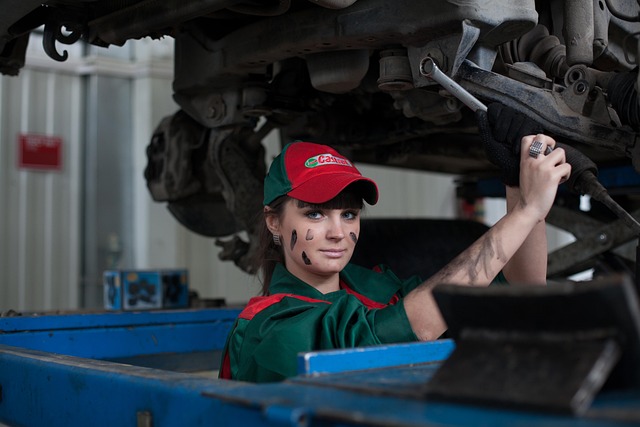
Image by avtoritetkhv from Pixabay
Every car rolls off the assembly line with a recommended service interval. Here we unpick what that means, and whether it’s a big deal if you ignore it.
What is a service interval?
All manufacturers recommend that their cars are regularly serviced. The service interval is the recommended maximum length that the car should go between services – usually presented as a time interval (e.g., every year), or as a distance covered (e.g., every 12,000 miles). Manufacturers advise that you service the car according to which comes first, so if you’ve run up 12,000 miles in eight months, it’s time to get a service.
During the service, trained mechanics will check your vehicle for faults, advise about any potential problems, and carry out maintenance work. As the RAC helpfully explains:
Typically, [a service] will include a range of checks, including checking the oil, tyres, brakes, suspension, exhaust and other components. The service will also include topping up any fluids and changing the oil filter, if necessary.
Car services can also include minor repairs, such as tightening belts and adjusting the timing, as well as more extensive repairs.
Is regular servicing that important?
Definitely. We’d say there are four main reasons:
- Servicing corrects small problems before they become bigger problems. As an example, depending on the type of service, a mechanic may tighten a loose timing belt. Left uncorrected, loose belts can lead to all sorts of issues, including catastrophic engine failure.
- Servicing keeps the car running at optimal efficiency. Fuel economy, braking, how easily the car starts and more can all improve. The car may even feel different after a service, restoring that sweet-as-a-nut driving experience that had gradually disappeared.
- Servicing increases the longevity of the car’s most important systems. Oil and filter changes, for example, allow the oil to lubricate the engine’s moving parts more effectively, reducing wear and prolonging their life.
- When carried out at a garage, regular servicing increases the resale value of the car, by reassuring prospective buyers that it has been looked after.
What if I don’t drive the car that much?
A typical service interval might be one year or 12,000 miles -and again, it’s whichever comes soonest. That raises the question of why low-mileage drivers need to stick to the recommended times for their service. If you’re only driving, say, 3,000 miles a year, why not service the car every four years?
This would be fine if components only deteriorate when they are being used. But that’s not the case. Brake fluid, for example, gradually absorbs moisture from the air, becoming more corrosive and potentially damaging brake lines. In fact, some components of the car may deteriorate faster with very little use. Cars used mainly on short trips, for example, spend a greater proportion of their time running before the oil has reached optimal temperature – potentially leading to greater wear.
So unfortunately, low mileage drivers don’t get a free pass. They would be well-advised to stick to the ‘whichever comes soonest’ recommendation.
Nope, your MOT hasn’t got it covered.
At first glance, servicing your car and getting it MOTed might seem to carry out the same job. After all, both involve inspecting the vehicle for faults and advising you on correcting them.
However, that’s where the similarity ends. The MOT focuses on mandatory safety checks – the sort of stuff that puts you and other road users in danger if it’s not working right. The MOT is not concerned with how long your engine lasts or whether the car has started driving like a 50-year-old tractor. Servicing has different priorities, and although there can be some overlap between what’s checked in both, there will be important differences too.
Bob down the road vs a reputable garage
It’s easy to see why servicing at a garage doesn’t come cheap. Garages have high running costs, not least of which is paying the salaries of trained technicians. Should you do your own service, or maybe get Bob down the road (who knows a bit about cars) to do it?
There’s no doubt that many thousands of people successfully service their own cars, and that many more have trusted friends and neighbours carry out the work. Nevertheless, we’d always advocate having your car serviced by trained mechanics at a reputable garage. And that’s not just because servicing is part of our bread-and-butter.
Firstly, it’s a question of training and experience. When you take your car to a professional, you know that they’ve been taught the proper way to check and repair, rather than having picked up a method that sort-of works. Also, we’re not knocking weekend car enthusiasts, but they’re unlikely to have racked up the hundreds of hours of experience that the pros acquire.
Secondly, there’s simply more comeback if something goes wrong.
And thirdly, dealing with a garage means that you have those stamps in your service book, which show definitively that your car has been serviced when you say it has.
Need servicing in South Wales? Look no further.
If you’re based in South Wales and your car is due for a service, why not give us a call? We offer top-quality servicing carried out by trained technicians with oodles of experience. Although we specialise in VW-group cars such as Volkswagen, Audi, SEAT and Skoda, we can service virtually any marque and model. Our aim is always to offer a main dealer level of service without the price tag. Located just a few minutes drive from Cardiff, we’re ready and waiting for your call – or use the form on our website.
The WVS blog covers a wide range of automotive topics, from the contentious to the light-hearted.
WVS provides services, repairs and MOTs, delivering a main dealer level of care at affordable prices. To book your vehicle in, or for any enquiries, get in touch.
